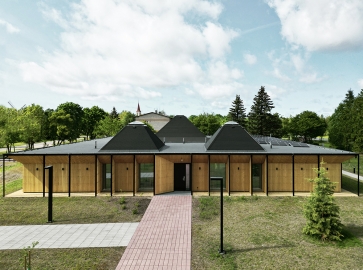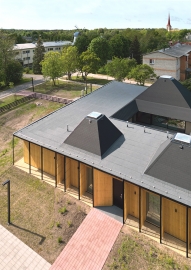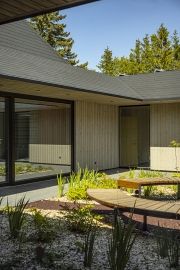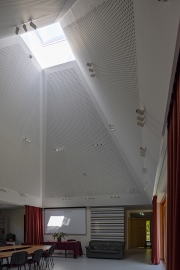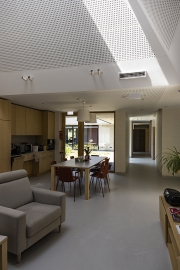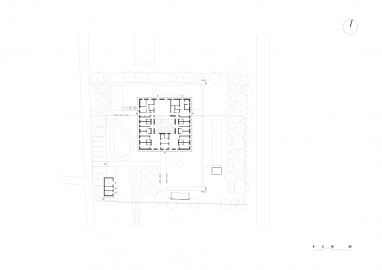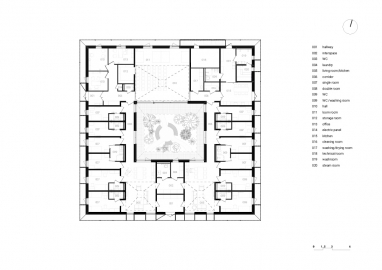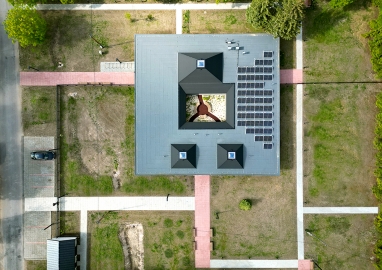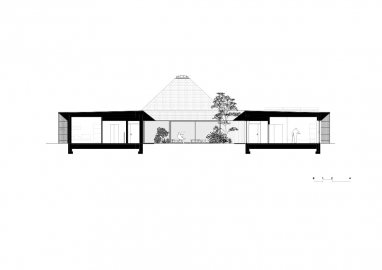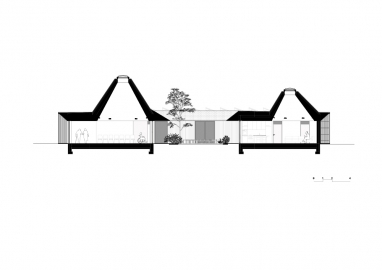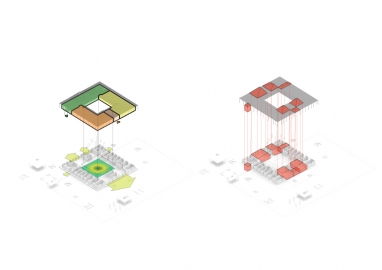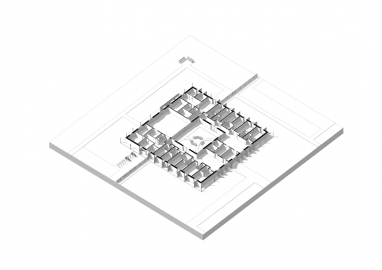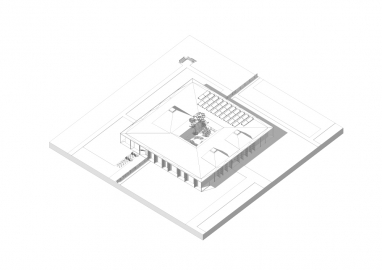Mustjala Retirement home and Daycare Center
Located in the tiny village of Mustjala, the building references the local architectural culture. The cone-shaped volumes rising from the roof are reminiscent of a traditional farm complex, where multiple buildings with different functions are gathered around a courtyard, marked by the sloping roofs extending from the cubic volume of the buildings.
The building also caters to local villagers, providing spaces for various communal activities such as cooking, sauna visits, interest groups, or crafts.
The point of departure for the square shaped building was to create a sense of home, offering a humane and supportive environment where both the indoor and outdoor spaces attract and complement each other. The building's spatial program is divided into two parts. On the northern side, there is a public community center. It includes a communal hall, hobby room, activity room, and sauna - all of which can be used by the local people. The entire building is centered around a tranquil and sunny inner courtyard, which has a calming and charming effect. Access to the courtyard is available from both the day center and the residential wing.
The retirement home introduces a new concept of co-living for the elderly of Saaremaa Island, Estonia. The key lies in providing residents a simplified way of life. Residents, who are often coming from solitude after their life partner has passed away, live in rural farmhouses scattered over the island and face harsh day to day living conditions. The home offers either seasonal or all year round rental units for independent residents to retreat back to. for the residents, companionship and co-existence is as important as day to day errands. The architecture of the house caters to this ideal by communal spaces ranging from an assembly hall, sauna, activity rooms and communal kitchen. This setup is aimed to make the elderly feel integrated into the community life. As the folk on the island accustomed to harsh climate of the outdoors, the house caters to this emotional need by the sheltering courtyard for easy access to the outdoors. With its collection of local seasonal blooming flora, the garden traditionally has been the place where to meet visitors, both friends and family.
As a sad reality, municipalities in Estonia have a very limited budget for social projects. Even the fact that there was a public open competition for a new building was advocated by the architects union and local architects. As the competition brief asked for sustainable materials, the competition entry won with a CLT wooden structure. During the design phase, the budget was cut and the only way to proceed was to construct the structural walls out of concrete blocks. All finishes in the exterior still remained wood, citing the local timber facades in the neighborhood. Wood is further used in the interior design to make the living spaces warm and furthermore bring the feeling of home.

